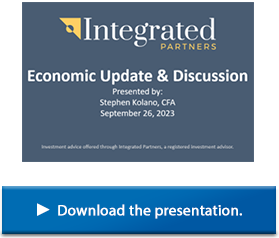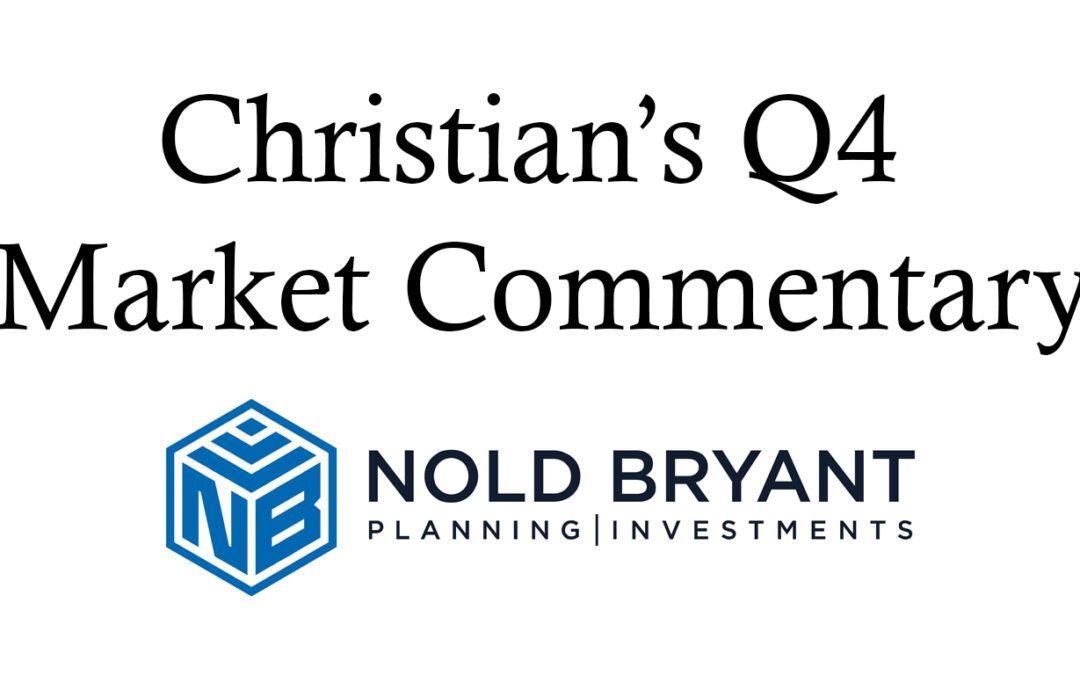“It’s snowing still,” said Eeyore gloomily. “And freezing… however,” he said, brightening up a little, “we haven’t had an earthquake lately.”
A.A. Milne humorously captures what I believe to be the current prevailing view of the economy as well as financial markets. We haven’t had a recession lately, but consumer sentiment is only at 68.1 (according to University of Michigan’s September survey). This is higher than the low of 2022, but still significantly lower than the high of over 100 reached in early 2020. The question we will attempt to answer is whether all that negativity is warranted.
We will start with what’s most important for markets right now – interest rates and inflation. Inflation (as measured by CPI) fell from its high of 9.06% in July of 2022 to 2.97% in June of this year but has since ticked back upwards to 3.67%. Though looking at CPI as a whole is important, it can be a bit misleading, so we like to look at core CPI as a better representation of the direction of inflation since it removes components that exhibit large amounts of volatility from month to month, such as food and energy prices. The rate of inflation, according to core CPI, has continued to fall to 4.35%. So, we are still well above the Federal Reserve’s 2% inflation mandate and while we think the core number will continue to fall into the low to mid 3’s, that is still more inflation than the Fed will be happy with.
According to the CME FedWatch Tool, the current probability of a Fed rate hike is approximately 33% for the November meeting and 45% for the December meeting. However, based on reading between the lines while listening to recent Fed speeches, we believe both of those probabilities to be too high and think it’s most likely that the Fed is done with rate hikes for the year. If that is the case, the market should react favorably as the probability of rate hikes goes down. On the flip side though, the market is expecting 2-3 rate cuts next year, which we also think is unlikely. If the Fed disappoints the market and doesn’t deliver the cuts that are expected, the interest rates in the 1- to 3-year section of the yield curve will likely go up.
This backdrop creates great opportunities for fixed income investors in being strategic about what parts of the yield curve we have exposure to, in addition to the great value being offered by higher interest rates (that we think may be here for longer than many expect). If you have a hard time getting excited about bonds, I don’t blame you. Last year was the worst year for the US Aggregate Bond Index in history and if this year finished negative, which it is currently, it will be the first time in history that the index has had negative returns for three years in a row. As difficult as it may be to see the light at the end of the tunnel, it is a case of short-term pain for long-term gain, as we now not only have yields at attractive levels, but those higher yields will also help insulate the bonds from further interest rate increases. For example, if you have a 1% bond, the price of the bond will take a much harder hit if rates go up by 0.5% than if you have a 6% bond with the same scenario.
Since we believe we are near the end of the Fed’s hiking cycle, we think it’s possible that bonds could return slightly less than their current yields if rates were to tick a little higher still (keeping in mind that yields are higher than we’ve seen in over 15 years). It seems much more likely though that they will return more than their yields since most bonds are currently trading at a discount. Lastly, bonds can provide great diversification in this current environment. We don’t think a recession or the Fed cutting rates is imminent but if we are wrong and a recession does materialize, high credit quality bonds should do incredibly well in that environment as the prices on the bonds go up, while yields are going down. This is a reason why we are focused on high credit quality bonds – so that as defaults go up in this environment of higher interest rates, we are not holding the bonds that are most likely to default (with low credit ratings).
Before this year began, Gross Domestic Product was projected to be between -0.2% and 0.1% for the first two quarters, and yet we have posted 2% or higher GDP in both quarters and are trending to do the same in the 3rd quarter (according to the Atlanta Fed). Unemployment is up slightly but still near all-time lows of 3.8%, showing a resilient labor market. There are unique challenges that come from a strong labor market, such as we are seeing with the UAW strikes and the effect that similar situations could have on inflation, but overall, we are seeing continued surprising economic strength.
When it comes to the stock market, the question of how it’s doing depends entirely on what part of the market you are focused on, as we have seen a great dispersion in returns this year. To give you a sense of this, the Russell 3000 Index (the largest 3,000 companies in the US) finished the quarter up over 12% while the Dow Jones was only up 1%. There are eleven sectors in the S&P 500 and five of them were negative year-to-date – including utilities, which was down over 14%. Meanwhile, six were positive – including communications, technology, and consumer discretionary – each up 25% or more. Finally, global stocks trailed US stocks by approximately 7% and emerging markets stocks trailed by nearly 11%.
Our belief is that if interest rates stay higher (for longer than many think they will), while there may not be significant upside in some of the major indices that have had a great run this year, such as the S&P 500 and NASDAQ, we believe there are good opportunities in pockets that have not participated as much in the rally so far this year, such as small and mid-cap stocks, value stocks, and international stocks – especially in certain emerging market economies. We think the dispersion will only continue to increase, but with different beneficiaries going forward than we have seen this year so far. We have already seen the beginning of this, as there was nearly a complete reversal in the top performing sectors in August and September from the rest of the year.
In conclusion, we don’t believe it’s snowing and freezing but there are signs of frost in places. We believe this only serves to create opportunities for the investor that is nimble and patient. Above all else, no two people’s situations or financial plans are the same. Our chief aim is to invest in a way that accomplishes your goals, not someone else’s, and so we welcome any questions you have about markets and how your investments are positioned to help you achieve those goals.
In case you missed it… Access the Replay!
Many factors have contributed to the unsettled financial markets in recent months and you may be wondering…
Did you miss our Expert Insights on Market Trends and Wealth Protection webinar last month? We were joined by Steve Kolano of Integrated Partners to talk about many factors that have contributed to the unsettled financial markets in recent months, trending topics, and top of mind questions. The conversation was impactful, and the presentation was filled with valuable insights.
We invite you to watch the replay. Download the presentation to view at your own leisure.
Watch the replay now.
 If you come across anything of interest and want to discuss further, simply reply to this email, or call the office. We’re always here to educate and guide you.
If you come across anything of interest and want to discuss further, simply reply to this email, or call the office. We’re always here to educate and guide you.
Sincerely,
The Nold Bryant Investments Team








